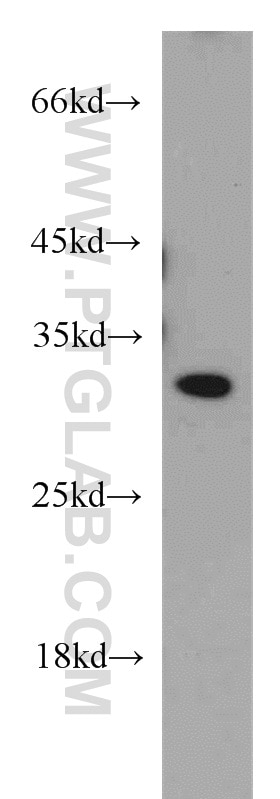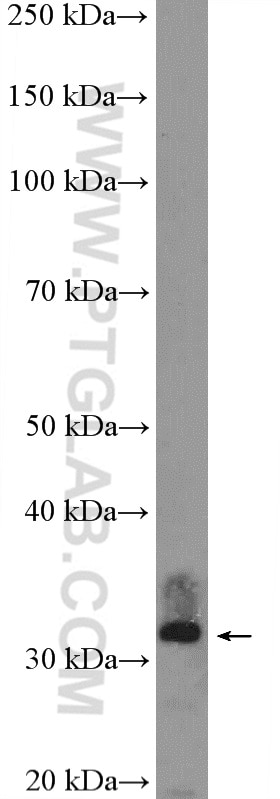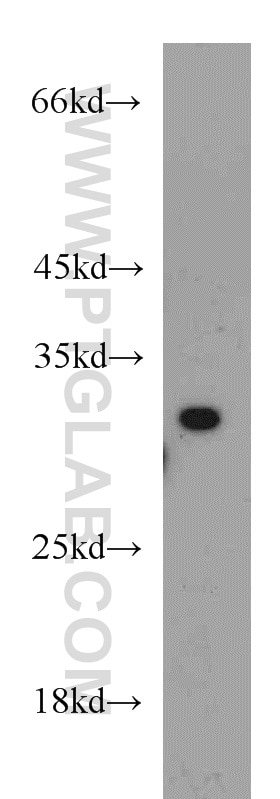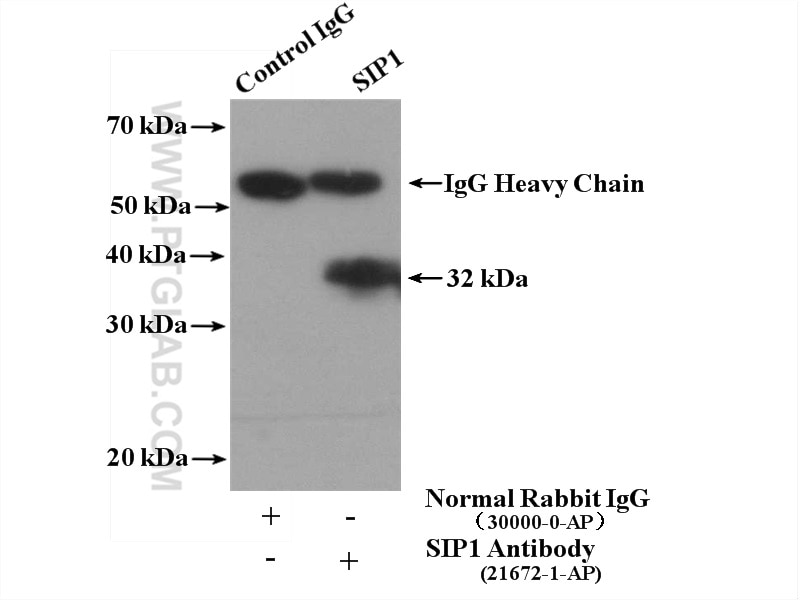SIP1 Polyklonaler Antikörper
SIP1 Polyklonal Antikörper für IP, WB,ELISA
Wirt / Isotyp
Kaninchen / IgG
Getestete Reaktivität
human, Maus, Ratte
Anwendung
WB, IP
Konjugation
Unkonjugiert
Kat-Nr. : 21672-1-AP
Synonyme
Galerie der Validierungsdaten
Geprüfte Anwendungen
| Erfolgreiche Detektion in WB | HepG2-Zellen, HeLa-Zellen, Rattenhirngewebe |
| Erfolgreiche IP | HepG2-Zellen |
Empfohlene Verdünnung
| Anwendung | Verdünnung |
|---|---|
| Western Blot (WB) | WB : 1:500-1:2000 |
| Immunpräzipitation (IP) | IP : 0.5-4.0 ug for 1.0-3.0 mg of total protein lysate |
| It is recommended that this reagent should be titrated in each testing system to obtain optimal results. | |
| Sample-dependent, check data in validation data gallery | |
Veröffentlichte Anwendungen
| WB | See 3 publications below |
Produktinformation
21672-1-AP bindet in WB, IP SIP1 und zeigt Reaktivität mit human, Maus, Ratten
| Getestete Reaktivität | human, Maus, Ratte |
| In Publikationen genannte Reaktivität | human, Maus |
| Wirt / Isotyp | Kaninchen / IgG |
| Klonalität | Polyklonal |
| Typ | Antikörper |
| Immunogen | SIP1 fusion protein Ag16500 |
| Vollständiger Name | survival of motor neuron protein interacting protein 1 |
| Berechnetes Molekulargewicht | 280 aa, 32 kDa |
| Beobachtetes Molekulargewicht | 32-35 kDa |
| GenBank-Zugangsnummer | BC104968 |
| Gene symbol | SIP1 |
| Gene ID (NCBI) | 8487 |
| Konjugation | Unkonjugiert |
| Form | Liquid |
| Reinigungsmethode | Antigen-Affinitätsreinigung |
| Lagerungspuffer | PBS mit 0.02% Natriumazid und 50% Glycerin pH 7.3. |
| Lagerungsbedingungen | Bei -20°C lagern. Nach dem Versand ein Jahr lang stabil Aliquotieren ist bei -20oC Lagerung nicht notwendig. 20ul Größen enthalten 0,1% BSA. |
Protokolle
| Produktspezifische Protokolle | |
|---|---|
| WB protocol for SIP1 antibody 21672-1-AP | Protokoll herunterladen |
| IP protocol for SIP1 antibody 21672-1-AP | Protokoll herunterladen |
| Standard-Protokolle | |
|---|---|
| Klicken Sie hier, um unsere Standardprotokolle anzuzeigen |
Publikationen
| Species | Application | Title |
|---|---|---|
Sci Rep Functional interaction between FUS and SMN underlies SMA-like splicing changes in wild-type hFUS mice. | ||
Neurobiol Dis UsnRNP trafficking is regulated by stress granules and compromised by mutant ALS proteins. | ||
J Mol Med (Berl) Hyper-SUMOylation of SMN induced by SENP2 deficiency decreases its stability and leads to spinal muscular atrophy-like pathology. | ||
Biomolecules (20S)G-Rh2 Inhibits NF-κB Regulated Epithelial-Mesenchymal Transition by Targeting Annexin A2. |





